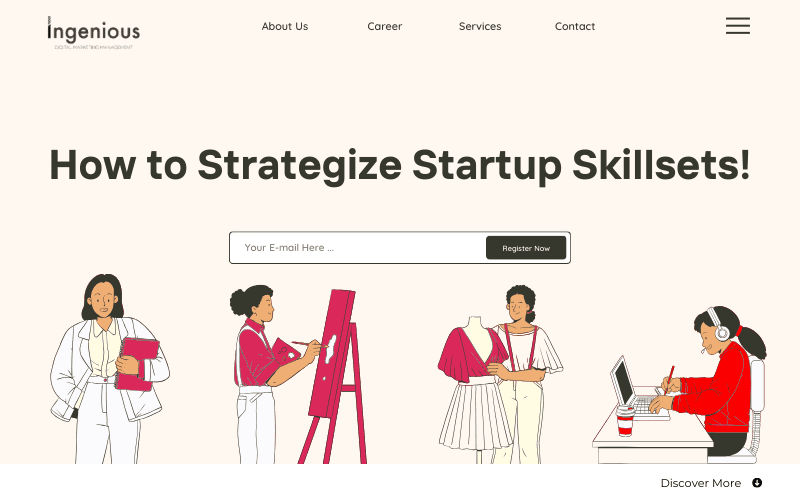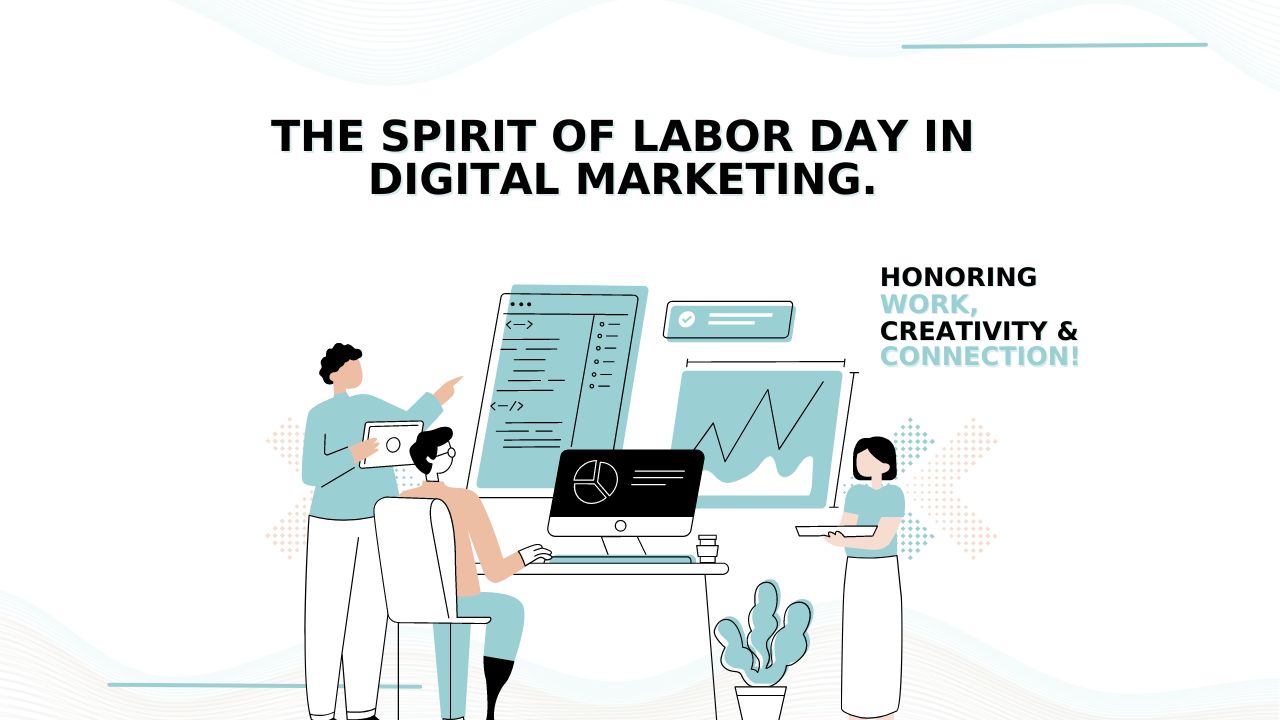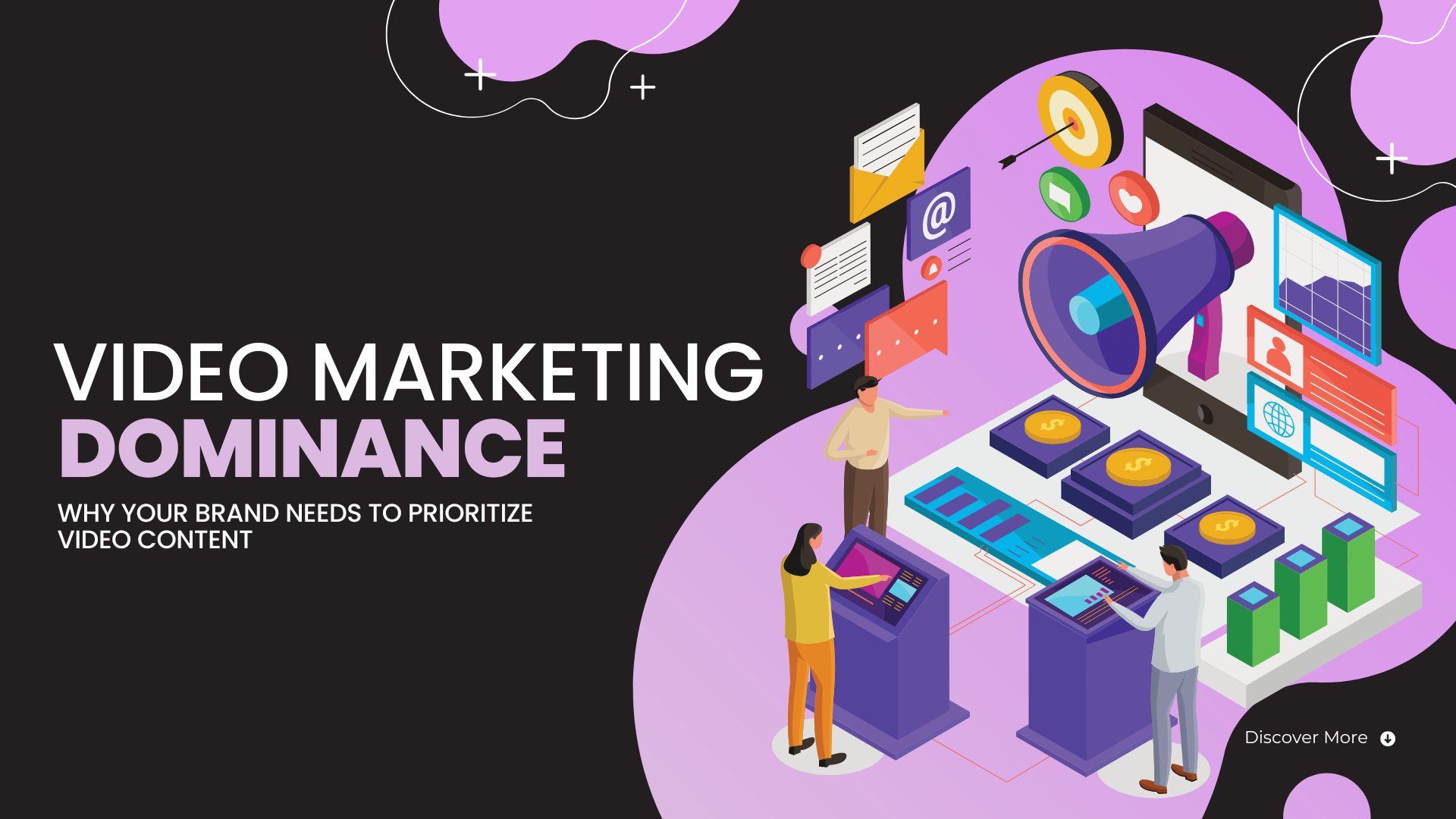
How to Strategize Start-up Skillset!
Digital marketing can be a powerful tool for start-ups to establish their brand presence, generate leads, and acquire customers. Here are some tips tailored specifically for start-ups venturing into digital marketing.
Define Your Goals – Clearly define your marketing objectives. Whether it’s brand awareness, lead generation, customer acquisition, or something else, having specific goals will guide your digital marketing strategy.
Objective: To increase brand recognition and visibility in the target market.
Key Performance Indicator (KPI): Measure brand mentions, social media reach, website traffic, and search engine visibility.
Target: Increase brand awareness by 25% within the next 6 months.
Alignment with Business Objectives : Ensure that brand goals are in line with broader organizational goals and objectives, such as revenue targets, market expansion plans, or product/service launches.
Specificity and Clarity: Clearly articulate each goal with specific details, including what is to be achieved, by when, and how success will be measured. Avoid vague or ambiguous language to ensure everyone understands the objectives.
Relevance to Target Audience: Consider the needs, preferences, and behaviors of the brand’s target audience when defining goals. Ensure that goals are designed to address customer pain points, fulfill needs, and deliver value to the target market.
Realistic and Achievable: Set goals that are challenging yet attainable within the given resources, time constraints, and market conditions. Unrealistic goals can lead to frustration and demotivation, while overly conservative goals may limit growth potential.
Flexibility and Adaptability: Remain flexible and open to adjusting goals as needed in response to changes in the market, business environment, or internal factors. Regularly review and reassess goals to ensure they remain relevant and aligned with evolving priorities.
Communication and Buy-In: Communicate the defined goals clearly and effectively to all stakeholders, including employees, management, investors, and external partners. Foster buy-in and alignment across the organization by involving relevant parties in the goal-setting process and explaining the rationale behind each goal.
Know Your Audience – To Understand your target audience’s demographics, interests, pain points, and online behavior. This information will help you create relevant marketing messages.
“Know Your Audience” is a crucial aspect of start-up business strategy that involves:
Demographic Analysis: Conduct thorough research to identify key demographic characteristics of the target audience, including age, gender, income level, education level, occupation, and geographic location.
Psychographic Profiling: Dive deeper into the psychographic traits and characteristics of the target audience, such as lifestyle, values, interests, attitudes, hobbies, and personality traits. Understand what motivates and influences their purchasing decisions.
Market Segmentation: Divide the target market into distinct segments or groups based on shared characteristics or needs. This allows for more targeted and personalized marketing strategies that resonate with specific audience segments.
Customer Personas: Create detailed fictional representations of ideal customers, known as customer personas or buyer personas. These personas should encapsulate the demographics, psychographics, goals, challenges, pain points, and preferences of different segments within the target audience.
Behavioural Analysis: Analyze consumer behaviour patterns, such as purchase history, online browsing habits, social media engagement, and interactions with the brand. Identify trends, preferences, and pain points to tailor marketing messages and offerings accordingly.
Market Research: Utilize various research methods, including surveys, interviews, focus groups, and data analysis, to gather insights directly from the target audience. Understand their needs, expectations, satisfaction levels, and perceptions of the brand and its competitors.
Competitive Analysis: Study competitors’ strategies, offerings, strengths, weaknesses, and market positioning to identify opportunities and differentiate the brand effectively. Understand how competitors are engaging with the target audience and identify gaps or areas for improvement.
Build Strong Online Presence – By Creating a professional website that reflects your brand identity and provides valuable information to visitors. Establish profiles on relevant social media platforms where your audience is active.
Website Development: Create a professional, user-friendly website that reflects the brand’s identity, values, and offerings. Ensure that the website is optimized for both desktop and mobile devices, with clear navigation, compelling content, and easy-to-find contact information.
Search Engine Optimization (SEO): Optimize the website’s content, structure, and metadata to improve visibility in search engine results. Conduct keyword research, optimize on-page elements, build quality backlinks, and regularly update content to enhance organic search rankings.
Content Marketing Strategy: Develop a content marketing strategy to provide valuable, relevant content to the target audience. Create and publish high-quality blog posts, articles, videos, infographics, and other content formats that address audience needs, answer questions, and showcase expertise.
Social Media Presence: Establish a presence on relevant social media platforms where the target audience is active. Create engaging profiles, share valuable content, interact with followers, and participate in conversations to build brand awareness and foster community engagement.
Email Marketing Campaigns: Build an email list of subscribers interested in the brand’s products or services. Develop targeted email marketing campaigns to nurture leads, promote products or services, and drive conversions. Personalize content and segment email lists based on subscriber preferences and behaviours.
Online Advertising: Invest in online advertising channels such as Google Ads, social media ads, display ads, and sponsored content to reach a wider audience and drive traffic to the website. Set clear objectives, target relevant keywords or audience segments, and optimize ad campaigns for maximum effectiveness.
Online Reviews and Reputation Management: Encourage satisfied customers to leave positive reviews and testimonials on platforms like Google My Business, Yelp, and industry-specific review sites. Monitor online reviews and respond promptly to feedback, whether positive or negative, to demonstrate responsiveness and commitment to customer satisfaction.
Online Networking and Partnerships: Build relationships with influencers, industry experts, and complementary businesses in the online space. Collaborate on content creation, co-host webinars or events, and leverage partnerships to expand reach, increase brand visibility, and access new audiences.
Content is Key – Develop a content marketing strategy that provides value to your audience. Create high-quality content such as blog posts, videos, infographics, and case studies that address their needs and interests.
Content Strategy Development: Develop a comprehensive content strategy that aligns with the startup’s goals, target audience, and brand identity. Define the objectives of the content strategy, identify the target audience personas, and outline the types of content to be created.
Audience Research: Conduct thorough research to understand the needs, preferences, interests, and pain points of the target audience. Use this insight to tailor content topics, formats, and messaging to resonate with the audience and address their specific challenges.
Content Creation: Create high-quality, valuable content across various formats, including blog posts, articles, videos, infographics, podcasts, case studies, and eBooks. Ensure that content is well-researched, informative, and provides solutions or insights that benefit the audience.
Consistency and Frequency: Establish a consistent publishing schedule to maintain regularity and keep the audience engaged. Determine the optimal frequency of content publication based on audience preferences, industry trends, and available resources.
Engagement and Interactivity: Encourage audience engagement and interaction with content by including calls-to-action (CTAs), comment sections, social media sharing buttons, polls, quizzes, and interactive elements. Foster two-way communication and build relationships with the audience.
Content Amplification: Amplify the reach of content through paid promotion tactics such as social media advertising, sponsored content, native advertising, and influencer partnerships. Allocate budget strategically to maximize the impact of content promotion efforts.
Optimize for Search Engines – Implement basic SEO tactics to improve your website’s visibility in search engine results such as conduct keyword research, optimize meta tags, create quality content, and build backlinks from reputable sources.
Keyword Research: Conduct comprehensive keyword research to identify relevant search terms and phrases that potential customers are using to find products or services related to the start-up’s offerings.
On-Page Optimization: Optimize on-page elements of the start-up’s website, including meta titles, meta descriptions, headings, URLs, and image alt tags, to incorporate target keywords and improve search engine crawlability and indexing.
Content Optimization: Create high-quality, relevant content that addresses the needs and interests of the target audience while incorporating target keywords naturally. Optimize content structure, readability, and keyword density to enhance its relevance and visibility in search results.
Mobile Optimization: Ensure that the start-up’s website is mobile-friendly and optimized for mobile devices, as mobile responsiveness is a crucial ranking factor for search engines like Google.
Page Speed Optimization: Improve website loading speed by optimizing images, minimizing HTTP requests, leveraging browser caching, and utilizing content delivery networks (CDNs).The Faster pages are favored by search engines to provide a better user experience.
Technical SEO: Address technical aspects of website optimization, including crawlability, indexing, sitemap submission, robots.txt configuration, canonical tags, schema markup, and URL structure optimization.
Link Building: Develop a strategic link-building strategy to acquire high-quality backlinks from reputable websites in the start-up’s industry or niche. Focus on earning natural, relevant links through content creation, outreach, guest blogging, and partnerships.
Local SEO: Optimize the start-up’s online presence for local search by claiming and optimizing Google My Business listing, ensuring consistency in NAP (name, address, phone number) citations across online directories, and generating positive online reviews from satisfied customers.
Leverage Social Media –
- Engage with your audience on social media platforms by sharing valuable & relevant content.
- Responding to comments and messages, and participating in relevant discussions has a great impact over the engagement.
- Consider using paid advertising on platforms like Facebook and Instagram to reach a wider audience.
Email Marketing – Start building an email list early on and use email marketing to nurture leads and stay connected with your audience. Offer valuable content, promotions, and updates to encourage subscribers to engage with your brand.
- List Building: Start by building an email list of subscribers who have opted in to receive communications from the start-up. Offer incentives such as discounts, exclusive content, or resources to help in encouraging sign-ups.
- Segmentation: Divide the email list into smaller segments based on demographics, interests, behaviours, or past interactions with the start-up. Segmenting the list allows for more targeted and personalized email campaigns that resonate with specific audience segments.
- Personalization: Personalize email content and messaging based on the preferences and characteristics of each segment. Address recipients by name, tailor content to their interests or purchase history, and include dynamic content elements to enhance relevancy.
- Email Design and Layout: Design visually appealing and mobile-responsive email templates that reflect the startup’s branding and messaging. Use clear and concise copy, compelling visuals, and prominent calls-to-action (CTAs) to guide recipients towards desired actions.
- Automation: Implement email automation workflows to streamline campaign management and deliver targeted messages at the right time. Set up automated welcome emails, abandoned cart reminders, birthday greetings, and post-purchase follow-ups to nurture leads and drive more conversions.
- A/B Testing: Conduct A/B tests on various elements of email campaigns, such as subject lines, sender names, content layouts, and CTAs, to optimize performance and improve engagement rates. Test different variables to identify the most effective strategies for maximizing email effectiveness.
Monitor and Measure Results –
- Use of tools like Google Analytics, social media insights, and email marketing.
- Metrics to track the performance of your digital marketing efforts.
- Analyze data regularly and adjust your strategies accordingly to optimize results.
Stay Agile and Experiment –
- Be open to trying new digital marketing tactics and channels.
- Don’t be afraid to experiment, learn from failures, and iterate on your strategies to find what works best for your start-up.
Focus on Customer Experience –
- Provide excellent customer service and prioritize the customer experience at every touchpoint.
- Positive experiences will lead to satisfied customers who are more likely to become brand advocates and repeat customers.
Network and Collaborate –
- Build relationships with influencers, industry experts, and complementary businesses in your niche.
- Collaborating with others can help you reach new audiences and build credibility for your start-up.
Budget Wisely – Allocate your digital marketing budget strategically, focusing on channels and tactics that offer the best return on investment for your start-up’s goals.
Allocate Resources Strategically: Assess the start-up’s financial resources and allocate budget allocations based on the prioritization of marketing channels, tactics, and campaigns that are most likely to yield the highest return on investment (ROI) in achieving defined objectives.
Consideration of Fixed and Variable Costs: Distinguish between fixed costs (e.g., salaries, rent, utilities) and variable costs (e.g., advertising, marketing campaigns) to understand the budgetary constraints and flexibility available for marketing expenditures.
Cost-Benefit Analysis: Conduct a cost-benefit analysis to evaluate the potential ROI of different marketing initiatives and tactics. Assess the expected costs associated with each tactic against the projected benefits in terms of revenue generation, customer acquisition, or brand visibility.
Budgeting Approach: Adopt an approach to budgeting that allows for adjustments and reallocations based on ongoing performance monitoring, feedback, and changes in market dynamics. Be prepared to pivot budget allocations to capitalize on emerging opportunities or address unforeseen challenges.
Experimentation and Testing: Allocate a portion of the budget for experimentation and testing of new marketing strategies, tactics, and channels. Invest in small-scale pilot campaigns or tests to assess viability and effectiveness before committing larger budget allocations.
- Start-up businesses can budget wisely, maximize the impact of marketing investments, and achieve sustainable growth and success in the competitive marketplace.
Consistently refining your digital marketing strategies based on insights and feedback, start-ups can effectively leverage digital channels to grow their brand and drive business success.






